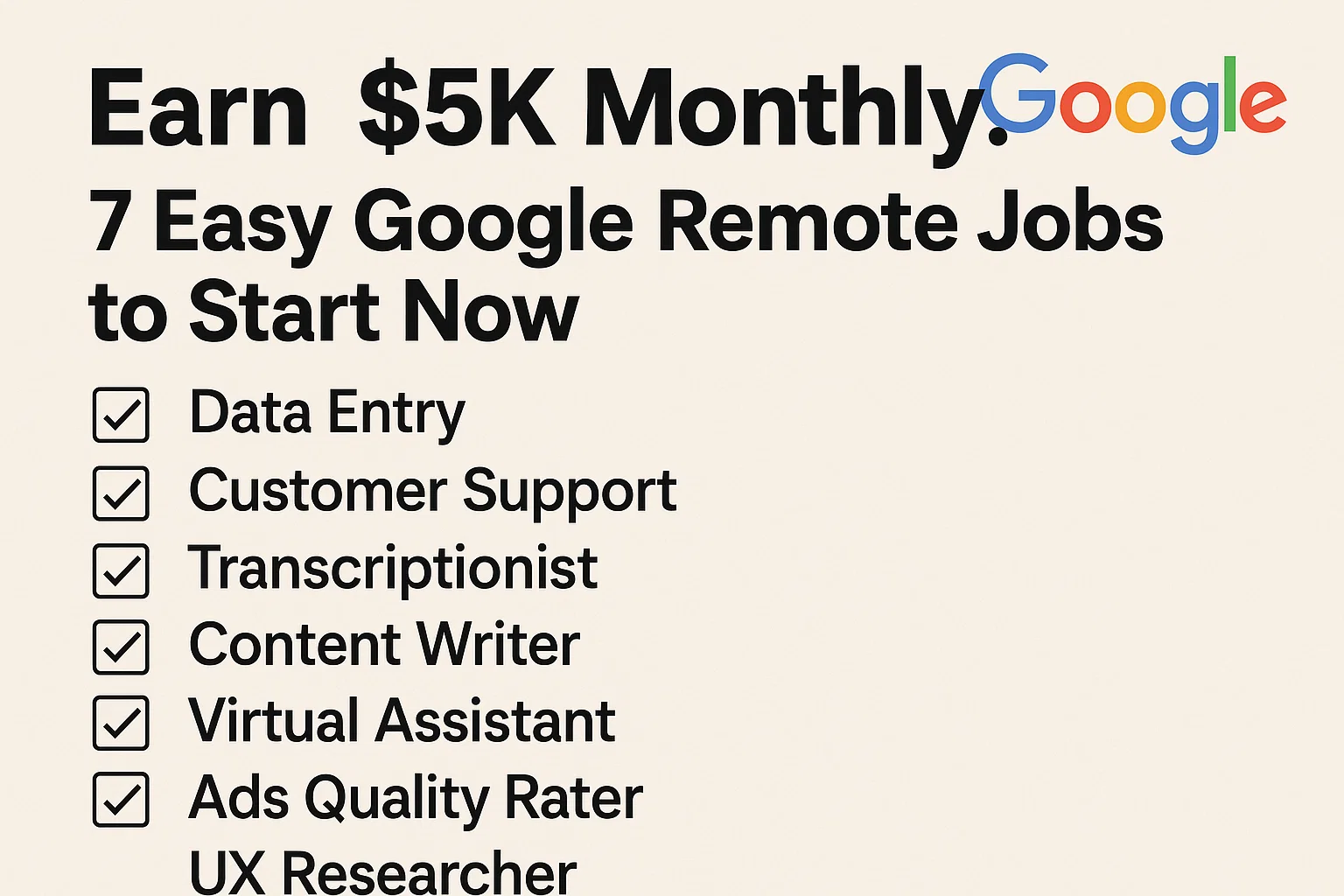
Earn More with Google AdSense: A Beginner’s Guide
Are you struggling to monetize your website despite having a steady stream of traffic? Can you really turn your online presence into a profitable venture? The answer lies in leveraging the right advertising platform.
Monetizing your website is crucial in today’s digital landscape, and Google AdSense is a popular choice among website owners. With AdSense, you can display targeted ads on your site and earn money from clicks or impressions.

As a beginner, getting started with AdSense can seem daunting, but it’s a viable option for earning more online. This guide will walk you through the basics of creating a google adsense account and optimizing your website for maximum earnings.
Key Takeaways
- Understand the basics of Google AdSense and its benefits for website monetization
- Learn how to create a google adsense account and get started with ad placement
- Discover strategies for optimizing ad performance and maximizing earnings
- Explore best practices for integrating AdSense with your website
- Gain insights into tracking and analyzing ad performance for continuous improvement
What is Google AdSense and How Does It Work?
Google AdSense is a popular advertising platform that enables website owners to monetize their online content. It provides a straightforward way for publishers to display targeted ads on their websites and earn revenue from their online presence.
The Basics of Google AdSense
Google AdSense is designed to connect publishers with advertisers. It uses a complex algorithm to match ads with the content of a website, ensuring that the ads displayed are relevant to the site’s visitors. This relevance increases the likelihood of visitors clicking on the ads, thereby generating revenue for the publisher.
How the AdSense Revenue Model Functions
The AdSense revenue model is primarily based on the cost-per-click (CPC) principle, where publishers earn money each time a visitor clicks on an ad. Additionally, AdSense offers a cost-per-thousand impressions (CPM) model, where earnings are generated based on the number of ad impressions.
Pay-Per-Click vs. Pay-Per-Impression Models
The pay-per-click (PPC) model rewards publishers for the engagement their ads receive, while the pay-per-impression (PPI) model focuses on the number of times ads are displayed. Understanding the differences between these models is crucial for optimizing ad performance.
Key Differences Between AdSense and Other Ad Networks
AdSense stands out due to its vast advertiser network and sophisticated ad targeting capabilities. Unlike other ad networks, AdSense offers a user-friendly interface and a wide range of ad formats, making it a preferred choice for many publishers.
| Ad Network | Targeting Capabilities | Ad Formats |
|---|---|---|
| Google AdSense | Contextual and behavioral targeting | Display, link, and video ads |
| Other Ad Networks | Limited targeting options | Primarily display ads |
Benefits of Monetizing Your Website with Google AdSense
Google AdSense offers a plethora of benefits for website owners looking to monetize their online presence. By integrating AdSense into their websites, publishers can tap into a robust system designed to maximize revenue potential.
Passive Income Potential
One of the most significant advantages of Google AdSense is its potential for generating passive income. Once the AdSense code is implemented on your website, you can earn money from ad clicks and impressions without actively working for it. This passive income stream can be a game-changer for content creators and website owners.
Ease of Implementation for Beginners
Google AdSense is designed to be user-friendly, making it accessible even for those who are new to website monetization. The straightforward application process and simple ad code implementation ensure that beginners can get started quickly.
Access to Google’s Vast Advertiser Network
By using Google AdSense, you gain access to Google’s vast network of advertisers. This means that your website can display high-quality, relevant ads that are more likely to engage your audience, thereby increasing the potential for clicks and revenue.
Smart Targeting and Contextual Advertising
AdSense employs smart targeting and contextual advertising to ensure that the ads displayed on your website are relevant to your content and audience. This not only improves user experience but also increases the likelihood of ad clicks, thereby boosting your website revenue.
Flexible Ad Customization Options
Google AdSense provides flexible ad customization options, allowing you to choose the ad formats and placements that best suit your website’s design and user experience. This flexibility ensures that you can optimize ad placement to maximize revenue without compromising your site’s aesthetics or usability.
Setting Up Your Google AdSense Account: Step-by-Step
The first step in leveraging Google AdSense for your website’s ad revenue streams is understanding the setup process. This involves several key steps, from ensuring you meet the eligibility requirements to navigating the approval process and setting up your payment and tax information.
Eligibility Requirements for AdSense Approval
Before you can start the application process, you need to ensure your website meets Google AdSense’s eligibility requirements. This includes having original content, complying with Google’s program policies, and not violating any copyright laws.
Creating and Submitting Your Application
To create your AdSense account, you’ll need to sign up on the Google AdSense website. You’ll be asked to provide information about your website and your contact details. Ensure that all information is accurate to avoid delays in the approval process.
Navigating the Approval Process
After submitting your application, Google will review your website to ensure it complies with their policies. This process can take several days to a few weeks. It’s crucial to have a website with substantial, original content to increase your chances of approval.
Setting Up Payment Information and Tax Details
Once your account is approved, you’ll need to set up your payment information. This includes providing your bank account details and tax information. Google AdSense issues payments monthly, provided you’ve met the payment threshold.
Understanding AdSense Terms and Conditions
It’s vital to thoroughly read and understand Google AdSense’s terms and conditions. This includes understanding their policies on click fraud, content guidelines, and other critical aspects that could affect your account status.
| Step | Description | Importance |
|---|---|---|
| 1. Eligibility Check | Ensure your website meets AdSense requirements. | High |
| 2. Application Submission | Sign up and provide required information. | High |
| 3. Approval Process | Wait for Google to review your application. | Medium |
| 4. Payment Setup | Enter bank and tax information. | High |
| 5. Terms Compliance | Understand and comply with AdSense policies. | High |
By following these steps and understanding the requirements, you can successfully set up your Google AdSense account and start monetizing your website effectively.
Implementing AdSense on Your Website
Implementing Google AdSense on your website is a crucial step towards monetizing your online presence through ppc advertising and other ad formats. To effectively integrate AdSense, you need to understand the process for different website platforms.
Adding AdSense Code to Different Website Platforms
Various website platforms require different approaches to integrating AdSense code. Here’s a breakdown for popular platforms:
WordPress Implementation
For WordPress sites, you can use plugins like AdSense Injector or manually insert the AdSense code into your theme’s header or sidebar.
Wix and Squarespace Integration
Wix and Squarespace allow you to add AdSense code through their built-in HTML widgets or code injection features. Ensure you follow their guidelines for code placement.
Custom HTML Websites
For custom HTML websites, you’ll need to manually insert the AdSense code into your HTML files, typically in the header, sidebar, or footer sections.
Mobile Optimization for AdSense
With the majority of web traffic coming from mobile devices, optimizing AdSense for mobile is crucial. Use responsive ad units to ensure that your ads are displayed correctly across different devices.
Responsive Ad Units for Multi-Device Compatibility
Responsive ad units automatically adjust their size and format to fit different screen sizes, enhancing user experience and ad visibility.
Testing Your Implementation
After implementing AdSense, it’s essential to test your ad placements to ensure they’re working correctly and not violating any AdSense policies. Use the AdSense dashboard to monitor ad performance and make necessary adjustments.
| Platform | Implementation Method | Notes |
|---|---|---|
| WordPress | Plugins or manual code insertion | Use plugins for easier management |
| Wix, Squarespace | HTML widgets or code injection | Follow platform guidelines |
| Custom HTML | Manual code insertion | Requires HTML knowledge |
Understanding AdSense Ad Types and Formats
To optimize ad revenue, it’s essential to understand the different AdSense ad types and formats available. Google AdSense offers a diverse range of ad formats that can be tailored to fit various website layouts and content styles, allowing publishers to maximize their online advertising potential.
Display Ads and Banner Options
Display ads are one of the most common AdSense ad types. These can be in the form of image or text-based banners and can be placed in various locations on a webpage. Display ads are highly customizable, allowing publishers to choose the size, style, and placement that best fits their website’s design.
In-feed Ads for Content Streams
In-feed ads are designed to blend seamlessly with the content on a webpage, particularly in article or blog post lists. These ads are responsive and adapt to different screen sizes, ensuring a smooth user experience across various devices.
In-article Ads for Blog Posts
In-article ads are placed within the body of an article, providing a non-disruptive way to monetize content. These ads are designed to be contextually relevant to the surrounding content, enhancing user engagement.
Matched Content for Related Articles
Matched content ads promote related articles or content on a publisher’s website, increasing user engagement and page views. This ad type helps to improve user experience by suggesting relevant content.
Auto Ads: Letting Google Optimize for You
Auto ads allow Google to automatically optimize ad placement on a webpage. This ad type uses machine learning to determine the best ad placements, sizes, and types, making it a convenient option for publishers.
Link Units and Their Applications
Link units are a type of AdSense ad that encourages users to explore related topics or content on a publisher’s website. These ads are highly interactive and can be customized to fit various website layouts.
By understanding and utilizing these various AdSense ad types and formats, publishers can effectively maximize their ad revenue and enhance their online advertising strategies.
Strategic Ad Placement to Maximize Google AdSense Revenue
Google AdSense revenue can be substantially increased with the right ad placement strategies. Effective ad placement is not just about putting ads on your website; it’s about placing them where they are most likely to be seen and clicked by your audience.
Heat Map Analysis for Optimal Placement
Using heat map analysis can help identify the most viewed areas of your webpage, allowing you to place ads in high-visibility areas. This tool provides insights into user behavior, showing where visitors tend to focus their attention.

Above-the-Fold Considerations
Placing ads above the fold can significantly increase their visibility. However, it’s essential to balance this with user experience to avoid overwhelming your visitors.
Content-Integrated Placements
Integrating ads within your content can make them less intrusive and more engaging. This approach can improve click-through rates by making ads feel more natural to the user experience.
Sidebar and Footer Ad Strategies
Utilizing sidebar and footer areas for ad placement can be effective, as these areas are often overlooked but can still capture user attention. Sidebar ads can be particularly effective for blogs with a strong sidebar presence.
Balancing User Experience and Ad Visibility
It’s crucial to strike a balance between ad visibility and user experience. Overloading your site with ads can deter visitors, while too few ads might not maximize your revenue potential.
Common Placement Mistakes to Avoid
Avoid common mistakes such as placing too many ads above the fold or using intrusive ad formats that can negatively impact user experience. Ensuring that your ads are relevant and non-intrusive is key to maintaining a positive user experience while maximizing revenue.
Analyzing AdSense Performance and Metrics
Analyzing AdSense performance is key to unlocking the full potential of your ad revenue streams. To optimize your earnings, you need to understand how to interpret the data provided by Google AdSense.
Understanding the AdSense Dashboard
The AdSense dashboard is your primary tool for monitoring your ad performance. It provides an overview of your earnings, page views, and click-through rates. Familiarizing yourself with the dashboard is essential for making data-driven decisions.
Key Performance Indicators to Track
To effectively analyze your AdSense performance, you need to track key performance indicators (KPIs) such as earnings, page views, clicks, and click-through rates (CTR). These metrics will help you identify areas for improvement.
Interpreting RPM, CTR, and CPC Metrics
Understanding metrics like RPM (Revenue Per Mille), CTR (Click-Through Rate), and CPC (Cost Per Click) is crucial for optimizing your ad revenue. RPM indicates your earnings per 1,000 page views, CTR measures the percentage of users who click on your ads, and CPC represents the average amount you earn per ad click.
Using Performance Reports to Identify Opportunities
AdSense performance reports provide valuable insights into your ad performance. By analyzing these reports, you can identify opportunities to improve your ad placement, targeting, and overall revenue.
Setting Realistic Earnings Expectations
Setting realistic earnings expectations is vital for a successful AdSense strategy. Factors like niche, traffic, and ad placement can significantly impact your earnings. Understanding these factors will help you set achievable goals.
Troubleshooting Low Performance Issues
If you’re experiencing low AdSense performance, there are several troubleshooting steps you can take. These include checking your ad placement, ensuring mobile optimization, and verifying that your content complies with AdSense policies.
| Metric | Description | Optimization Strategy |
|---|---|---|
| RPM | Revenue Per Mille | Improve ad placement and targeting |
| CTR | Click-Through Rate | Enhance ad relevance and visibility |
| CPC | Cost Per Click | Focus on high-paying niches and ad types |
AdSense Policy Compliance and Best Practices
Compliance with Google AdSense policies is not just a necessity, but a key to successful website monetization. Google has established a set of rules to ensure a fair and safe advertising environment for both advertisers and publishers.
Understanding Google’s Content Policies
Google’s content policies dictate what types of content are allowed to participate in the AdSense program. This includes prohibitions on adult content, copyrighted material, and illegal activities. Familiarizing yourself with these policies is crucial to avoid potential issues with your account.
Avoiding Common Policy Violations
Common policy violations include clicking on your own ads, encouraging others to click on your ads, and generating false impressions. To avoid these mistakes, it’s essential to educate yourself and others involved in managing your website.

Invalid Click Activity and How to Prevent It
Invalid click activity can lead to account suspension. To prevent this, ensure that your ad placement doesn’t encourage accidental clicks and avoid incentivizing visitors to click on ads.
What to Do If Your Account Gets Suspended
If your AdSense account is suspended, review the reason provided by Google, rectify the issue, and submit an appeal if you believe the suspension was in error.
| Policy Area | Description | Best Practice |
|---|---|---|
| Content Policies | Prohibits adult content, copyright infringement | Review Google’s content guidelines |
| Click Activity | Prohibits clicking own ads or encouraging others | Educate yourself and others |
| Ad Placement | Requires ads to be distinguishable from content | Use clear ad labeling |
Conclusion: Building a Sustainable Income with AdSense
Building a sustainable income with Google AdSense requires a strategic approach to ad placement, content creation, and audience engagement. By understanding how Google AdSense works and implementing best practices, you can maximize your ad revenue and create a steady stream of income.
A well-optimized Google AdSense account is crucial to achieving this goal. By following the steps outlined in this guide, you can ensure that your account is set up correctly and that you’re using the most effective ad formats and placements to reach your target audience.
To further boost your ad revenue, focus on creating high-quality, engaging content that resonates with your audience. This will not only improve your website’s visibility but also increase the likelihood of users interacting with your ads. By combining these strategies with a solid understanding of Google AdSense policies and best practices, you can build a sustainable income stream that supports your online business.
By implementing these strategies and continually monitoring your ad performance, you can optimize your Google AdSense earnings and achieve long-term success.
FAQ
What is Google AdSense, and how does it work?
Google AdSense is a program that allows website publishers to display targeted ads on their sites and earn money from these ads. It works by matching ads to the content and audience of the website, and publishers earn revenue from clicks or impressions.
How do I get approved for a Google AdSense account?
To get approved for a Google AdSense account, you need to apply through the AdSense website, providing information about your website and complying with AdSense’s eligibility requirements, such as having original content and complying with Google’s policies.
What are the different types of AdSense ads, and how can I use them?
AdSense offers various ad types, including display ads, in-feed ads, in-article ads, matched content, auto ads, and link units. You can use these ad types to monetize different parts of your website, such as sidebars, content streams, or article bodies, and experiment to find the best formats for your audience.
How can I maximize my AdSense revenue?
To maximize AdSense revenue, you can optimize ad placement using techniques like heat map analysis, place ads above the fold, integrate ads within content, and use sidebar and footer ad strategies, while balancing user experience and ad visibility.
What are the key performance indicators (KPIs) to track in AdSense?
Key performance indicators to track in AdSense include RPM (revenue per thousand impressions), CTR (click-through rate), and CPC (cost per click). Monitoring these metrics helps you understand ad performance and identify opportunities for improvement.
How can I avoid AdSense policy violations?
To avoid AdSense policy violations, you should understand and comply with Google’s content policies, avoid prohibited content, and prevent invalid click activity. Regularly review AdSense policies and updates to ensure ongoing compliance.
What should I do if my AdSense account is suspended?
If your AdSense account is suspended, review the reason for suspension, address any policy violations, and submit an appeal if you believe the suspension was in error. Ensure you comply with AdSense policies before resubmitting your application.
Can I use AdSense on multiple websites?
Yes, you can use AdSense on multiple websites, but each site must comply with AdSense policies, and you need to add the AdSense code to each site. Ensure that all sites meet AdSense’s eligibility requirements.
How does AdSense handle mobile optimization?
AdSense provides responsive ad units that automatically adjust to fit different screen sizes and devices, ensuring that ads are displayed correctly on mobile devices. You can also use mobile optimization techniques to improve ad performance on mobile.
What are the tax implications of earning AdSense revenue?
Earning AdSense revenue has tax implications, and you may need to report this income on your tax return. AdSense will provide you with tax information, such as a 1099 form if you’re based in the United States, to help with tax compliance.



